July 2011
Slovenia
Just Flat-Out Beautiful
The countryside is extraordinarily lovely, the Slovenes are charming, and it’s been a delightful exploration.
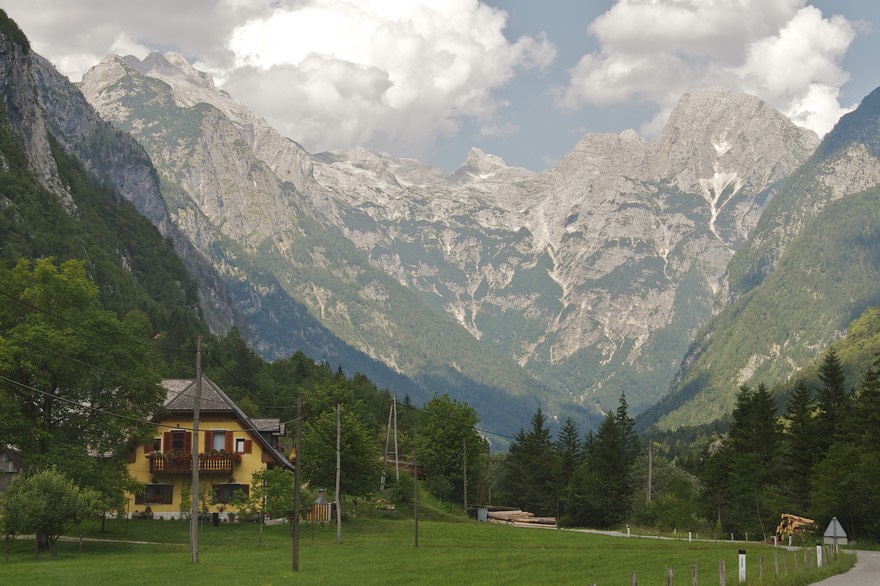
They keep their country clean and tidy, they have cool stuff to go see, they honor their dead, their fields and rivers are incredibly gorgeous, everybody under the age of about 30 speaks damn fine English – just about the perfect country to visit. We’ve decided it can be summed up in three words: fields, forests, and flowers; all three absolutely lovely. What are you waiting for? You need to come see!
All told, we spent 13 nights sleeping in Slovenia (is there a movie title here somewhere?). Not all in one fell swoop; we made two (or was it three? How ever many times it was, it seems like more) separate trips back across the border into Italy, trying to make contact with our mail. Never happened, except for one small bit: a map of Bulgaria and Romania that we probably could have found at the local petrol station. While we waited, we made forays east into Slovenia. Fortunately, Slovenia isn’t all that big, and during this time of waiting we were able to see most of the area between Ljubljana (the capitol and smack dab in the center of the country), and the Italian border, all quite painlessly. Being summer, we studiously avoided the short section of coastline (46 Kms) the powers that be have allowed Slovenia to keep.
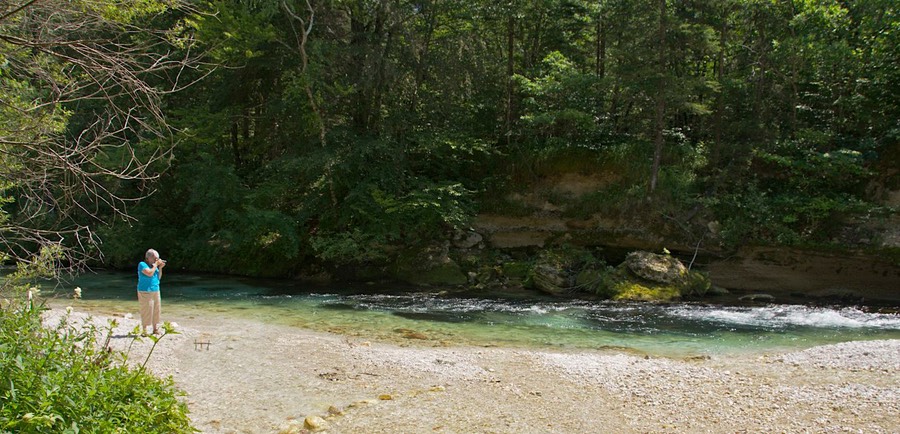
Early on, we were enduring a nasty heat wave, so as soon as we could we headed straight for the mountains. From Cividale del Friuli (and its friendly post office staff) we crossed the border and entered the first in a series of incredibly lush river valleys. They are ubiquitous here – each one lovelier than the last. Slovenia has lots of water, and the rivers run a clear turquoise; beautiful. Grass is everywhere, interspersed with trees and crops and various critters (all looking fat and happy).
As soon as we crossed into Slovenia, we could see differences. The houses looked more northern European, and mansard roofs were the norm. The money didn’t change (still euros), but the prices did. Fuel was cheaper, as were groceries. Speaking of such, I’d suddenly lost the chance to buy some things, but things I’d not seen across several borders had now reappeared. The signage was different, of course, and we’d entered a country that didn’t speak a Latin-based language. And the drivers still had a bit to learn, although the roads were generally quite good.
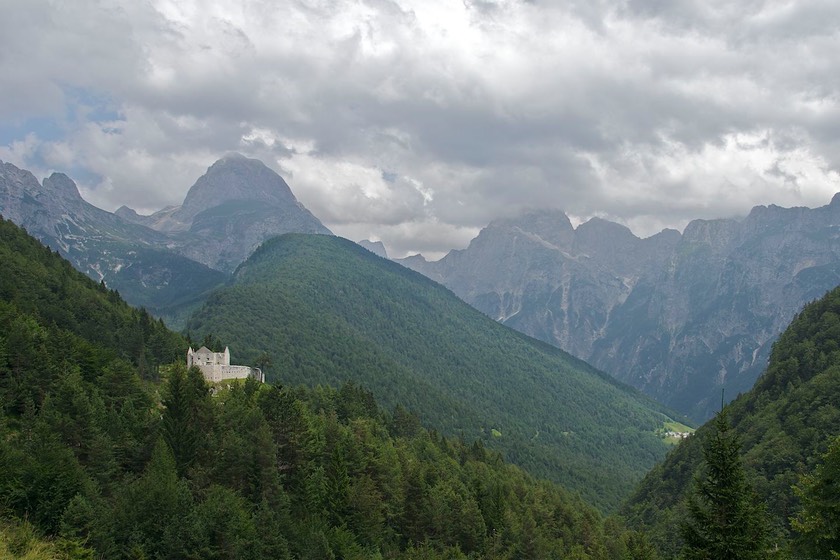
After awhile, we started climbing up a windy road (47 hairpin turns), heading into huge Triglavski National Park. This is a very popular destination area for vacationing Europeans. There are developed areas, but mostly it’s hiking, biking, and climbing activities that bring the folks here. Being on the southern edge of the Alps, it was nice and cool, which we really appreciated. We were surprised at how much water was in the streams, even in July, but it seemed normal to the locals. The lovely Soča Valley goes right through the park, and the kayaks and rafts and swimmers were out in force. It’s mid-July, and everyone trying to get an early start on their August vacation was out and about.
In addition to getting out of the heat, we were really interested in this area because it figured prominently in the fighting during World War I (we had seen it from the Italian side earlier in the month).
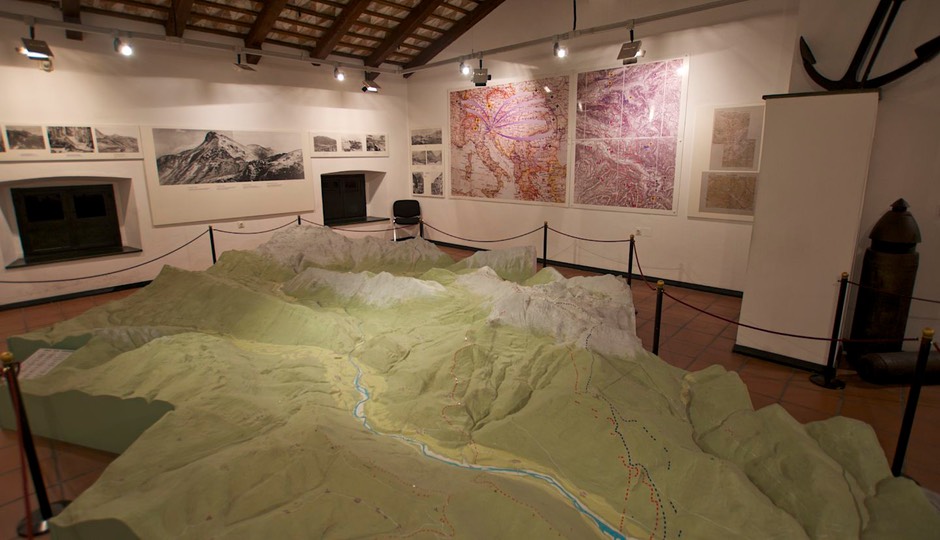
There is a very good war museum in Kobarid; we spent a goodly amount of time poring over the exhibits, which included an enormous display of photos taken in the area during the Soča offensive, in 1915. While lots of folks mostly think of WWI as taking place in France and Belgium, actually of course there was fighting on many fronts. In Kobarid we learned about the incredibly difficult mountain fighting that occurred between the Austro-Hungarians and the Italians. Many, many lives were expended for no gain; in the end everything pretty much returned to the status quo from before the war. Ernest Hemingway is mentioned at the museum; he was wounded in the action in this area, and wrote A Farewell to Arms based, in part, on that experience.
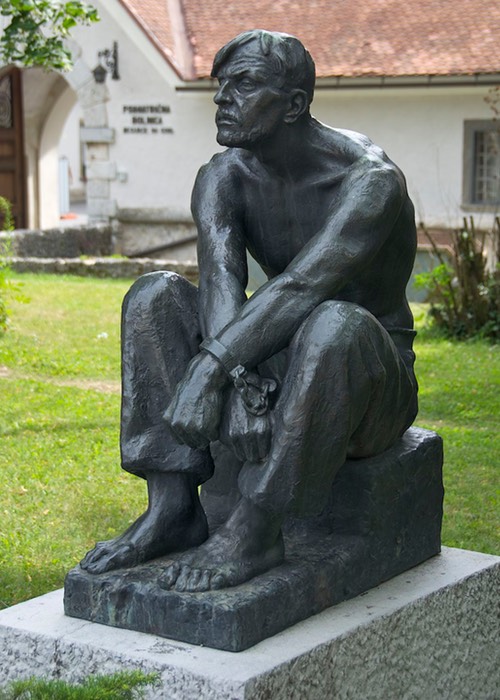
We visited the remains of Zgornja Radovna, a town burned by the Germans and left that way, as a reminder; there are parts of stone foundations and memorials. While there we chatted with a family from the Czech Republic, here biking through the area. He had worked in the States for several years, and we enjoyed sharing stories. He said, “Yeah, the Czech Republic is great, it’s home; but we love coming here to Slovenia on vacation.” Lot’s of people seem to feel that way.
A unique experience was the time we spent at the Museum of Hostages in Begunje. Just a small village (then and now), during WWII it was a detention center and a place of death. The museum consists of ten cells where prisoners were incarcerated before being shipped off or shot. The prisoners wrote on the walls, and some of their words (and scratched calendars) have been protected and preserved. Outside and further up the road there are graveyards and memorials, along with several very powerful sculptures; it was gripping and terrible.
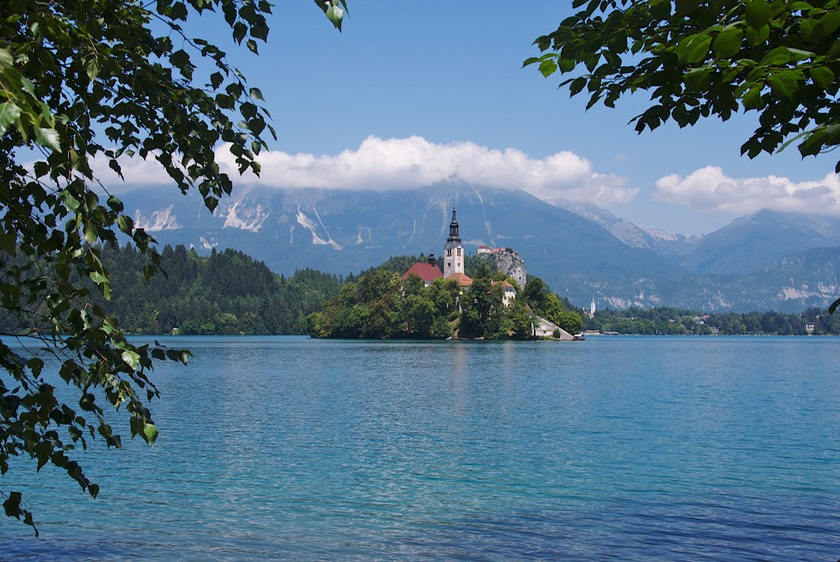
And now, right in our path were two lovely lakes that are the featured destinations in this area. Lake Bled (pronounced like “bleed”), looking just like its pictures, with its signature island in the middle complete with postcard-perfect castle and people swimming and camping and completely covering the ground. Somewhat less crowded, and less developed as a destination, was Lake Bohnj; every bit as beautiful, but considerably more low key. In spite of the crowds (and partly because of them) both of these destination resorts were actually very pleasant and beautiful. We were happy to join groups of people having such a wonderful time.
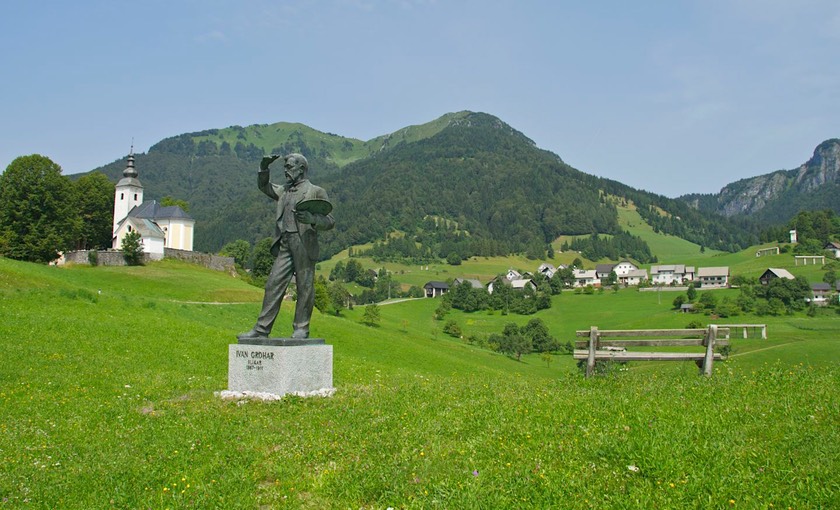
Much quieter, and uniquely idyllic, was the alpine community of Sorica. It had been billed as “typical” – we found it much more than that. The village was spread out over the hillsides, and the community had provided a bench for just sitting and viewing and reflecting and renewing. We found it heavenly, and just our speed. The families in the area were cutting the grass with scythes; it would be let dry in the field for some time, and then gathered and arranged on the drying racks we saw everywhere. In the forested areas, there was lots of logging; not clear-cutting as far as we could see, but individual logs being taken out. We stepped aside for the occasional logging trucks. Every little community had neatly organized supplies of firewood; large supplies indeed -- apparently every home relies on wood fires for heat in the winter and they address that need in a very neat and tidy manner. We also saw the occasional sawmill operation, with stacks of sawn logs; but the whole area seemed to be functioning on a very sustainable basis.
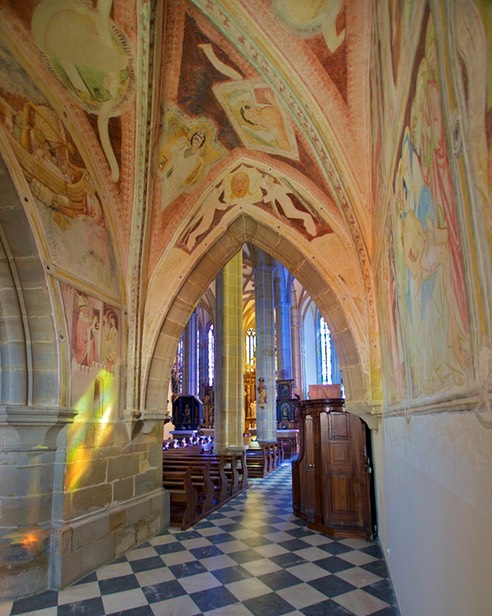
Lest you think we’ve lost interest, we’re still visiting churches galore – tiny rural ones, huge basilicas and cathedrals, pilgrimage destinations, monasteries, buildings both ancient and modern – they all get our attention. Sometimes they are open and we can go inside, other times we have to be content with enjoying the exterior. We’ve not been successful in following our guidebook’s suggestion of getting the key from the people who live in “the third house on the left.” The architecture fascinates us, and the frescoes. The altars, here in Slovenia, seem somewhat gaudy and overdone to us; our tastes run more to the austere. But they are all interesting. Often, in rural areas, we will spend the night in the parking lot. We love the sound of the bells. They aren’t all the same, you know; each set is different – and all are enchanting.
One town, and its chapel, were very special to us. In Kamnik, the Chapel of St. Eligius on the Mali Grad hill really stood out. Small, Romanesque, dainty and full of light, filled with frescoes, I could wax poetic. Somehow, we really connected there. We ignored any Gothic and Baroque elements added on in later centuries; the essence was pure Romanesque and we loved it. It doesn’t hurt that St. Eligius was the patron saint of blacksmiths; now, what more could you ask for!
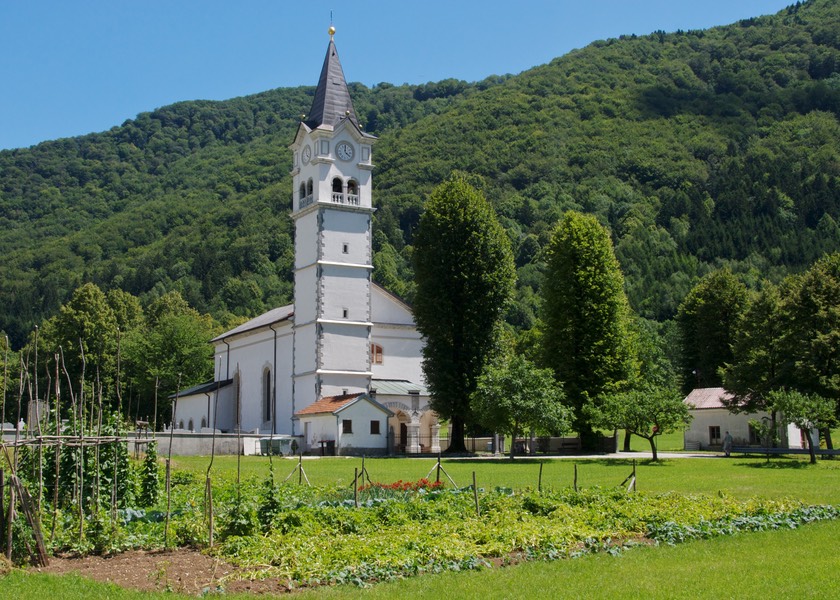
We dipped back across the border. (“No, I’m sorry, no mail for Mr. Howe; maybe tomorrow.” Well, actually it was just a slow shake of the head; being over thirty, no one in the PO spoke any English at all.) The weather had now cooled down a lot, the result of ongoing rain. That was okay with us; wet we could handle – it’s the heat that gets us down. But the cooler weather would be great. We’d learned of a valley just east of Gorizia that was supposed to be lovely, so off we plunged, back into Slovenia. The small road that travels between Krgar and Čepovan is indeed stunning; as good as it gets. Lush rolling hills, some grapes along with the other crops, a pretty stream, a couple of charming villages.
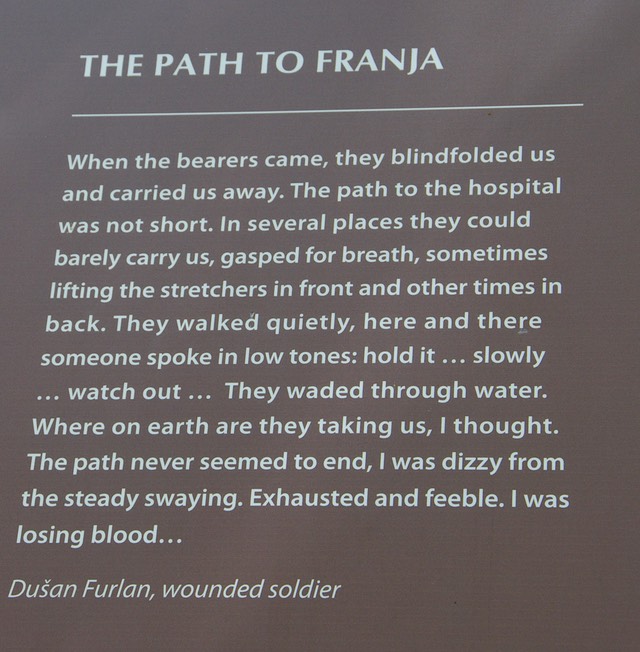
North of there we made one more “war” stop. The Slovene resistance during WWII was both active and successful; one of its best-known activities was treatment of the wounded of all countries. They had a total of 120 hospitals in the mountains, carefully hidden away and supplied by both locals and the Allies. Patients were brought in at night, blindfolded so they couldn’t later reveal the location of the hospital. We stopped at the Belnica Franja Partisan Hospital, near Cerkno, tucked away back in the hills up a narrow valley. There were excellent informational displays. The preserved hospital and outbuildings had been destroyed in 2007 because the nearby “creek” had became a flood; the site has now been reconstructed and is open again.
We hadn’t planned to search out war memorials and such in this area, but in our travels we learned that it’s a large part of the local history. Slovenia’s independence in 1991, as we understand it, was accomplished without any military action, but action was intense during both world wars and memories have not faded; the cemeteries are large, and even now are extraordinarily well tended. There are always people there, bringing votives or fresh flowers, and trimming the hedges and plantings. They are lovely. We will fairly often bunk down in the parking lot of a cemetery, and were continually impressed by the numbers of visitors coming and going.
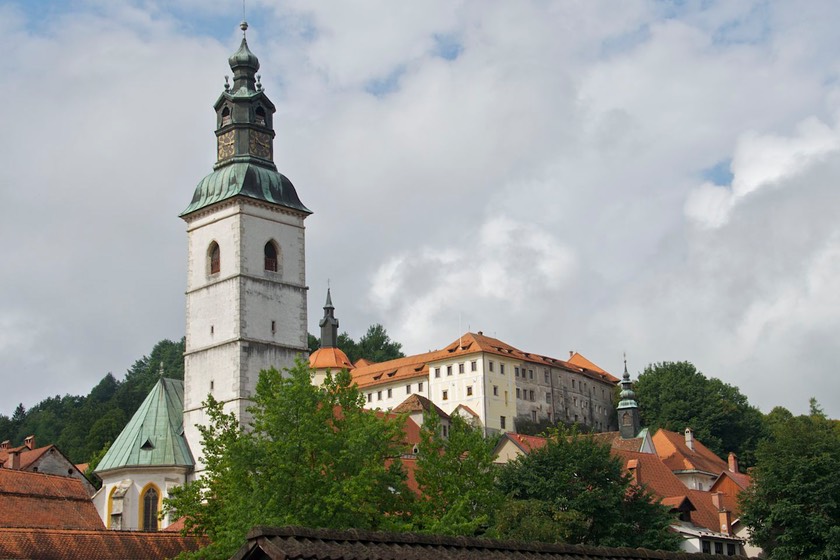
But we’ve done more than just churches and war memorials. Slovenia is home to several engaging towns, burgs, and cities, and we’ve visited many of them. Škofja Loka was an early favorite. It’s old, it’s charming, and we wandered happily amongst the raindrops, taking a zillion pictures and making friends with the folks at the tourist office, who were very helpful on several fronts. The twenty-somethings who run the place are bright and friendly, and are good problem-solvers. I was chatting with one fellow, probably a student, and he was telling me about a recent visit he and a friend had made to Serbia (which he said we absolutely must visit). He was giggling about how the Serbs talk funny and spell things in a funny way. He was making a big deal out of how they spell Michael Jackson: Majkel Đekson. It was cute. The way folks in one country view their neighbors is always fascinating. We didn’t break the news to him that, in our view, Slovenes talk pretty funny too.
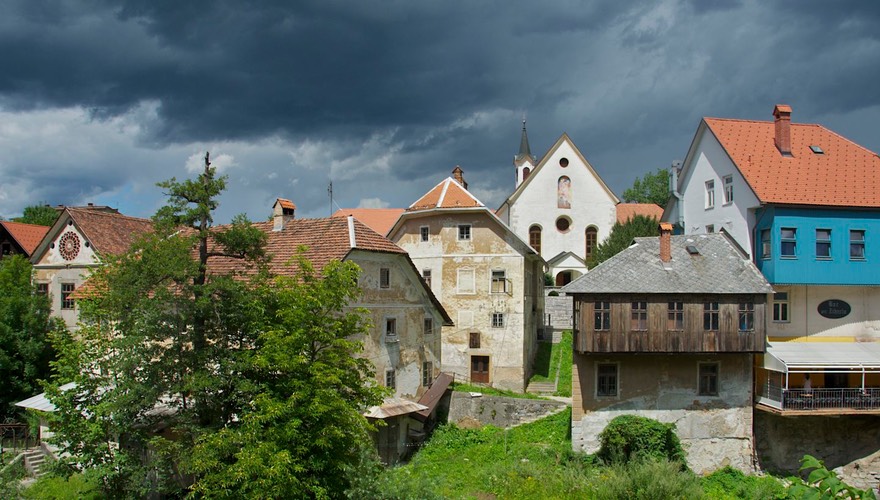
We’ve actually been back through Škofja Loka at least three times, moving around the country, in part due to its location, but also because they have really excellent wifi at the tourist office. We’ve found a spot to park up for the night where we can hear the bells from four different churches. Let the bell ringing competitions begin!
On a return visit to the post office in Cividale, we again had no luck, but made new friends. Francisco and Alessandra, who live there, sent us an email saying they’d seen the Tiger in town, thought our lifestyle tremendous, and was there anything they could do to help us while we were in the area. We said yes, and asked if they would be willing to interpret for us at the post office, to be sure everyone knew what we needed and was there anything else we should be doing. We loved meeting them, although in the end they could do nothing to help. We parted with them about to leave town for a vacation on Sardinia and Corsica, and we wandered east again, deciding to give it all another week or so before we called it quits.
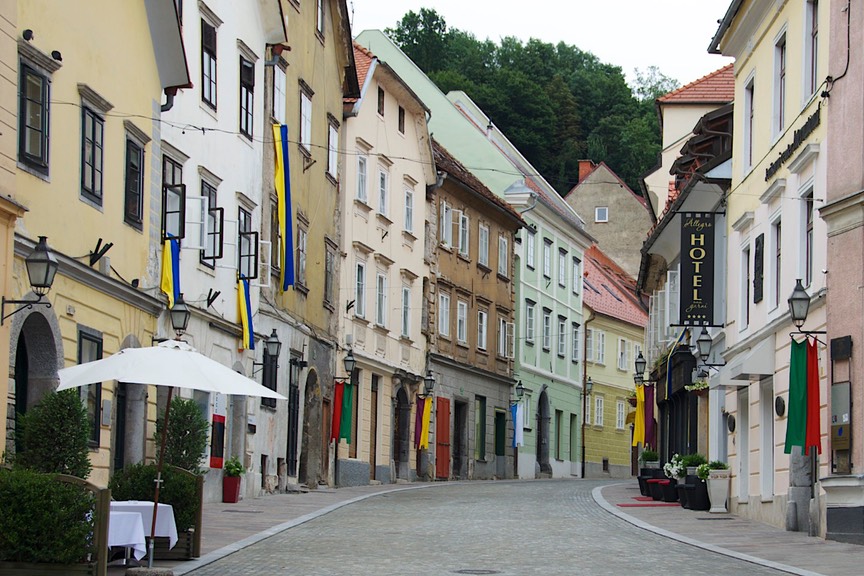
Checking out Ljubljana was next, and good stuff. So okay, time for “the discussion” of how to spell and how to pronounce. Not going to bore you with all the details; (HA, as if we knew!) just work on two rules: (1) all letters are pronounced, and (2) “j” is like a “y.” So… Lee-ublee-ana. Kinda. Sorta.
We targeted our visit for a Sunday and a Monday. We were able to find a parking lot, in the Tivoli Gardens, that was happy to have us spend the night; it was quite close to the historical center, and also to both the American and Irish Embassies (more on that later). We spent a happy Sunday afternoon wandering the quiet streets, getting wet in the rain but enjoying the city. It’s a lively place, with a large student population, which always adds to the fun. Plenty of old buildings to go around, in combination with some pretty bleak stuff we figured was left over from the Communist days. The old architecture reminded us of Ghent and Bruges – northern European in feel.
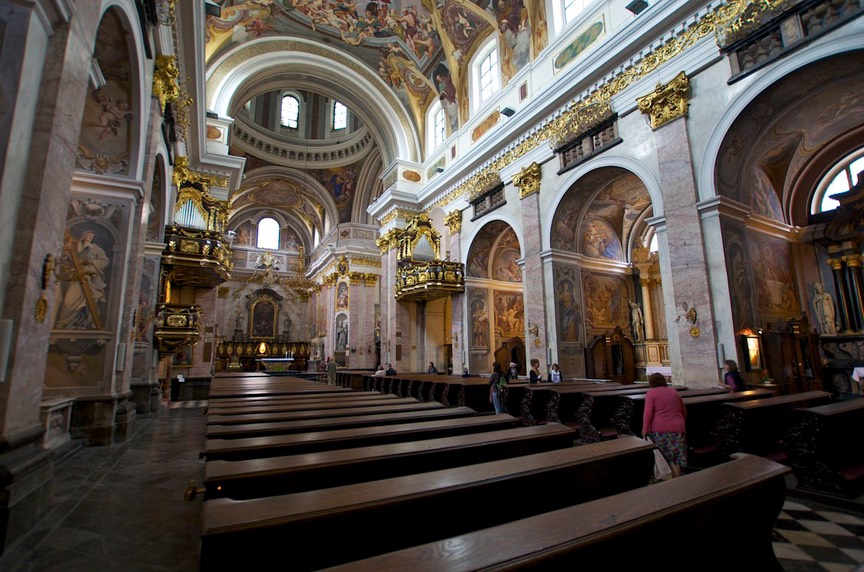
So, why were we visiting embassies? The Schengen Agreement, what else. You don’t want all the hairy details, but Rick is eligible for an Irish passport (father born in Dublin), and Ireland is a member of the EU. This would make him – and possibly me -- immune from the Schengen requirement that we leave all Schengen countries after 90 days (I’ve explained this to you before, I think; if you forget, just Google Schengen or check the Europe page on this website). At the Irish Embassy they said cool, sure you can have a passport; but you have to apply at an embassy in the States. So later on that.
Then we chatted with someone at the American Embassy. We wanted to get the current skinny on the Schengen rules just to be sure we weren’t missing anything. She confirmed everything we already knew but also offered some suggestions on ways to circumvent the constraints, and heartily endorsed the Irish idea, which was nice to hear. So we will pursue her ideas. A good couple of visits; for both of us, the first time to be in an embassy.
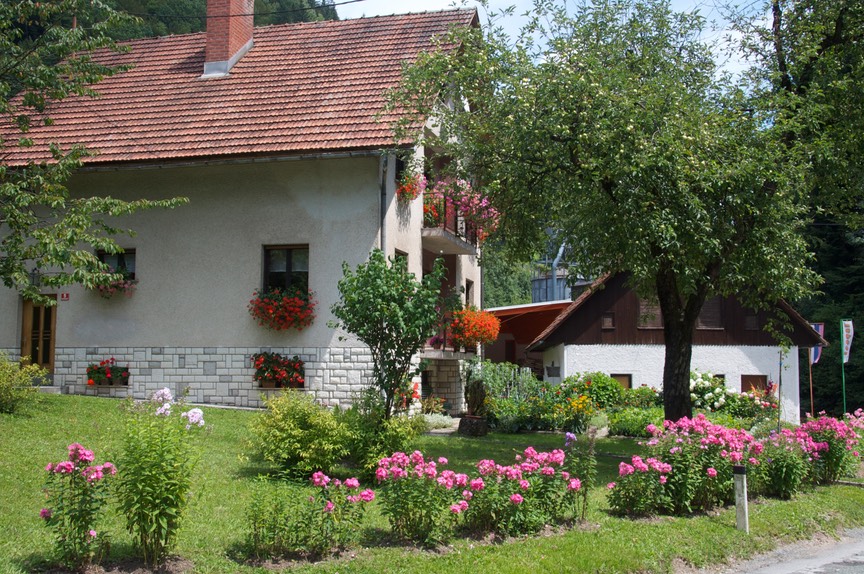
During our time here in Slovenia, we have stopped to gander at a few castles, but around here they look mostly like manor houses, and don’t get much more than a “drive-by” from us. Some are fortified, but it often looks sort of like an afterthought. Not too interesting.
Much of the housing in Slovenia seems “modern” and nothing special. The colors are generally pretty low key and pleasant, but they can be very bright and somewhat gaudy as in orange with silver stripes, or red with contrasting grey walls. But… and we cannot forget to talk about this: absolutely every home and building and garden is clean and neat and tidy and is absolutely filled with beautiful flowers. They are beautiful, stunningly beautiful. It must be the warm rain. It’s like being in western Oregon or on Vancouver Island. Wow!
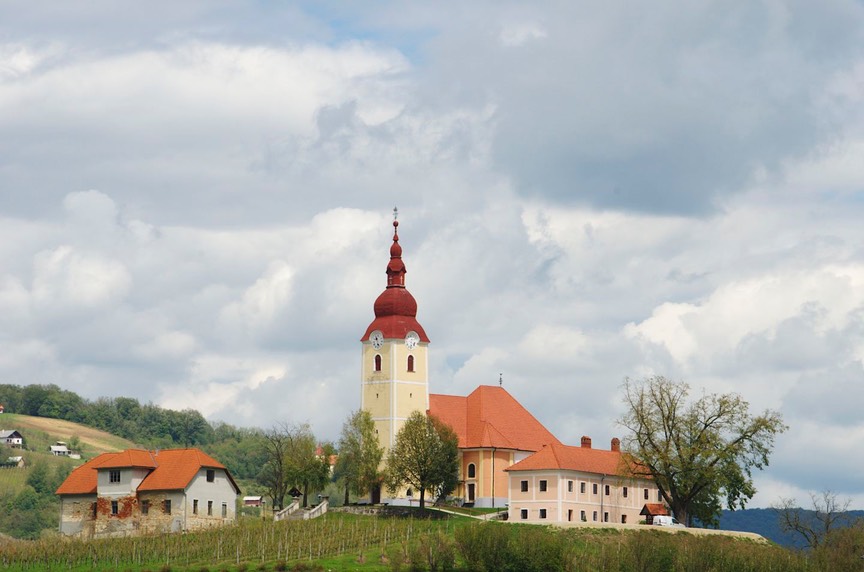
It sounds like we’ve only visited northwestern Slovenia; not so. The whole country is just as described here; though less mountainous as you move eastward, finally flattening out as you approach Hungary. We swung through the south, with more river valleys and rolling hills and flowers and – finally – both some sheep and some storks. We meandered through wine country and forests and hill towns that look like they should be in Italy. The corn is high and tasselling now, the peaches are ripe, and they are starting to bring in the first new apples.
We gave Italy one last chance to find our mail, but no dice. So, we’ve finally kissed the project off and decided to plunge ahead; chips are falling where they may (clunk, clunk). There may be issues later, but life goes on.
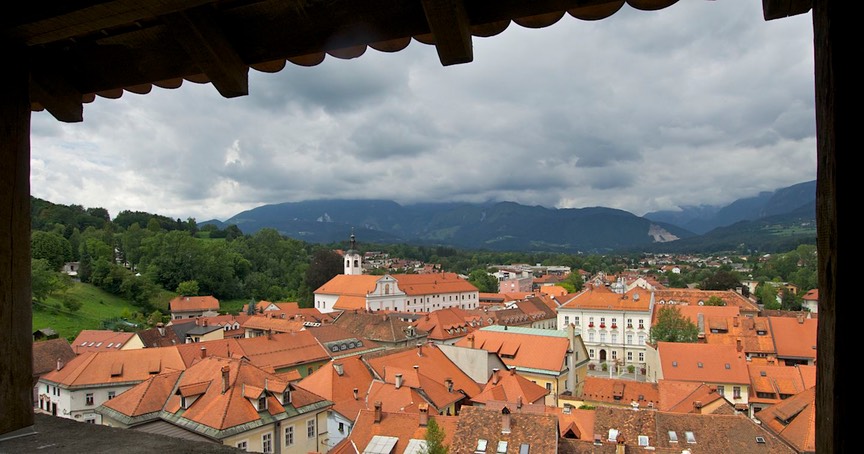
Crossing the border for the last time, we’ve moved east, on beyond the center of the country, by way of the lovely Krka Valley, perhaps the best of the best. Surpassingly gorgeous; lazy, with forgotten backwater towns and some of the best rural churches yet. Finally leaving the river, we trucked up to Olimje, with its interesting monastery (and stupendous chocolate store), and then to Ptuj.
Now Ptuj (pronounced just like it’s spelled (snicker), remembering your first lesson in introductory Slovenian, it’s P-tooey, honest!) makes a terrific last city to visit. You can walk and wander it easily, it has great architecture, and it’s on a river (they all are, practically). Nearby is a Mithra shrine, which I wanted to check out. Third century, pagan, secret, all the good stuff. It was out in a suburb, but I finally found it, only to discover it was locked up tight, and the lady next door had no interest whatsoever in helping me find the key. Whatever. But at least I tried.
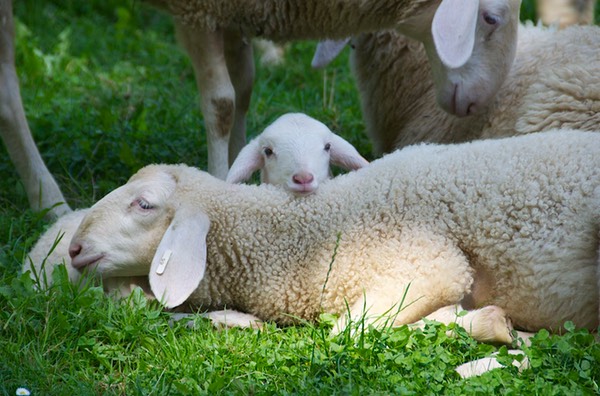
We have now said nasvidenje to Slovenia, having dropped south from Ptuj and headed for the Croatian border. It would be fun to explore further, but… time to move on. We are up against our Schengen time limit. Croatia will be our first non-EU country since Morocco.
We’ve reordered the guide book on Romania (one of the undelivered pieces of mail), and are planning our route for the rest of the summer. New adventures await us… and, hopefully, more church bells. We’re calling this the Summer of the Bells.
We hope this finds you happy and having a great summer; be well. Rick and Kathy
Click to see more photos from Slovenia